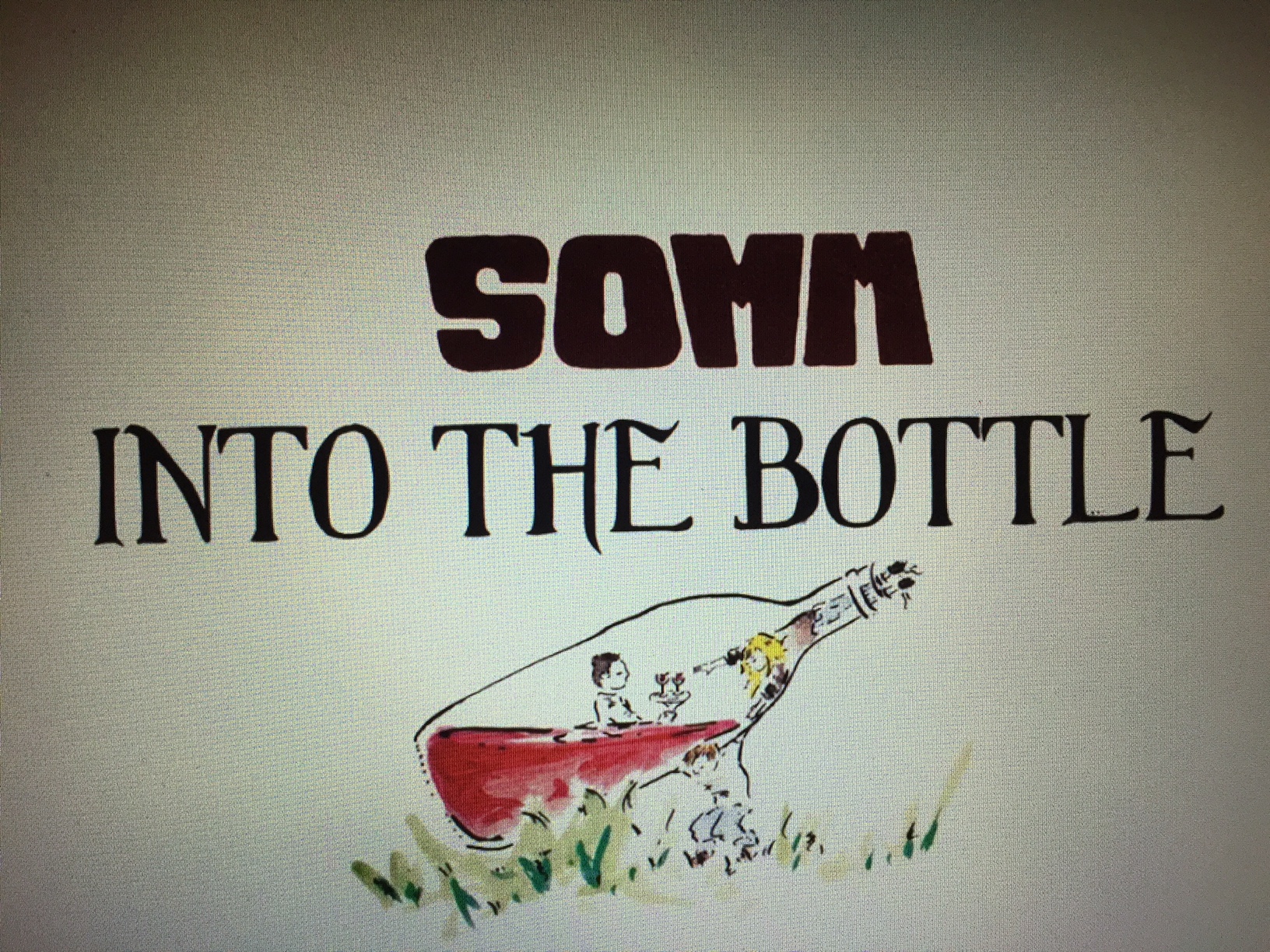If you’ve taken my advice and watched the movie “Somm,” you are now going to want to check out “Somm: Into the Bottle.” If you haven’t watched “Somm” yet, go do that now. I’ll wait.
Okay, so now that you’re ready to move on to the second installment from Jason Wise, let me just say that you’re going to need to have more than one bottle of wine on hand for this film. There are so many incredible wines being tasted, you’re going to want a few glasses for yourself.
“Into the Bottle” brings back some of the folks we met in “Somm” as well as many new faces. It opens with an attempt to answer the question, what is a sommelier? We see a variety of people sharing different, often contradictory, definitions. In the last clip before the opening credit sequence grape geneticist, Carole Meredith, quips “Can there be any other business where there’s so much bullshit?” Considering the reverence with which much of the movie unfolds, I love these little moments that remind us, as Brian McClintic is fond of saying “it’s just fermented grape juice.”
After the title sequence, we land on the idea that the best somms are, at heart, storytellers. This sets up the format of the film: Ten stories about wine, told from multiple perspectives (somms, winemakers, historians, etc.), featuring people tasting some of the most iconic wines in the world. You probably do need to be a bit of a wine geek to really enjoy this film. Not only is it basically a lot of waxing poetic about wine, but it waxes poetic about some strange things. Several minutes are devoted to the deep affection European winemakers have for the mold growing in their cellars. Spoiler alert: you can pet it! Possibly a bit niche.
The chapters focus on numerous aspects of wine from the importance of the vintage, to the cost, to the use of oak, to the wine industry in California. Along the way, we hear from various wine professionals who share very personal stories and connections. For instance, the chapter on oak tells us not only what oak imparts to wine, but also the story of Elio Altare, who revolutionized Barolo, alienated his father and caused a lasting rift among makers of Barolo. What did he do? He started aging his wines in smaller French oak barrels instead of the large Botti traditionally used for Barolo. New oak created softer, more approachable wines and the wines became popular, causing other winemakers to follow suit. Traditionalists were outraged. His father was one of them. We hear the story not only from various somms but also from Elio’s daughter, Silvia, who helps run the winery today.
Set inside the chapter that contrasts the historical reverence of European winemakers with the mavericks of the U.S. there’s a wonderful profile on Robert Mondavi and his pioneering influence in the California wine industry. The story is punctuated by tasting a bottle of the first vintage of Mondavi Cabernet Sauvignon from 1966. Still drinking well (at the time of filming) 49 years later. Forty-nine years is a long time for a bottle of wine, something only the greatest wines can achieve, but it’s a very short time for the wine industry itself. Not only did we start much later, but we were disrupted by prohibition. Most California wineries are less than 50 years old. The difference between the U.S. and old-world wineries, where winemakers go back 7, 11, 16 generations, is striking. Consider this: Schloss Vollards in Germany, where grapes have been grown since the first century, has a wine ledger for sales for the year 1492.
I enjoyed every story and could easily have watched a full documentary on each piece. Once again, I found myself wondering about the scenes that didn’t make the cut though. What else did Fred Dame, Jean Louis Chave and Aubert de Villaine have to say? I’d love to see more of so many of the people in this film. I’d love to have a glass of wine with them and just listen to their stories. I’d also really love to taste even one of the wines they open—alas most are extremely rare and way beyond my price point. Note to self: must play lotto. To me, this film touches on everything that makes wine magical, the sense of place, the history, the way it enhances food and the memories both created by and celebrated with a bottle of wine.
If, like me, the first two Somm movies have left you thirsty for more, don’t despair. Somm 3 has been released in select screenings. The Blu-Ray is available for pre-order on Amazon now and should be available for streaming in December. One of the focuses of the new film is the famous 1976 “Judgment of Paris” wine competition in which California wines beat French wines in a blind tasting putting the CA wine industry on the global map. I can’t wait.
Cheers!
Helen
